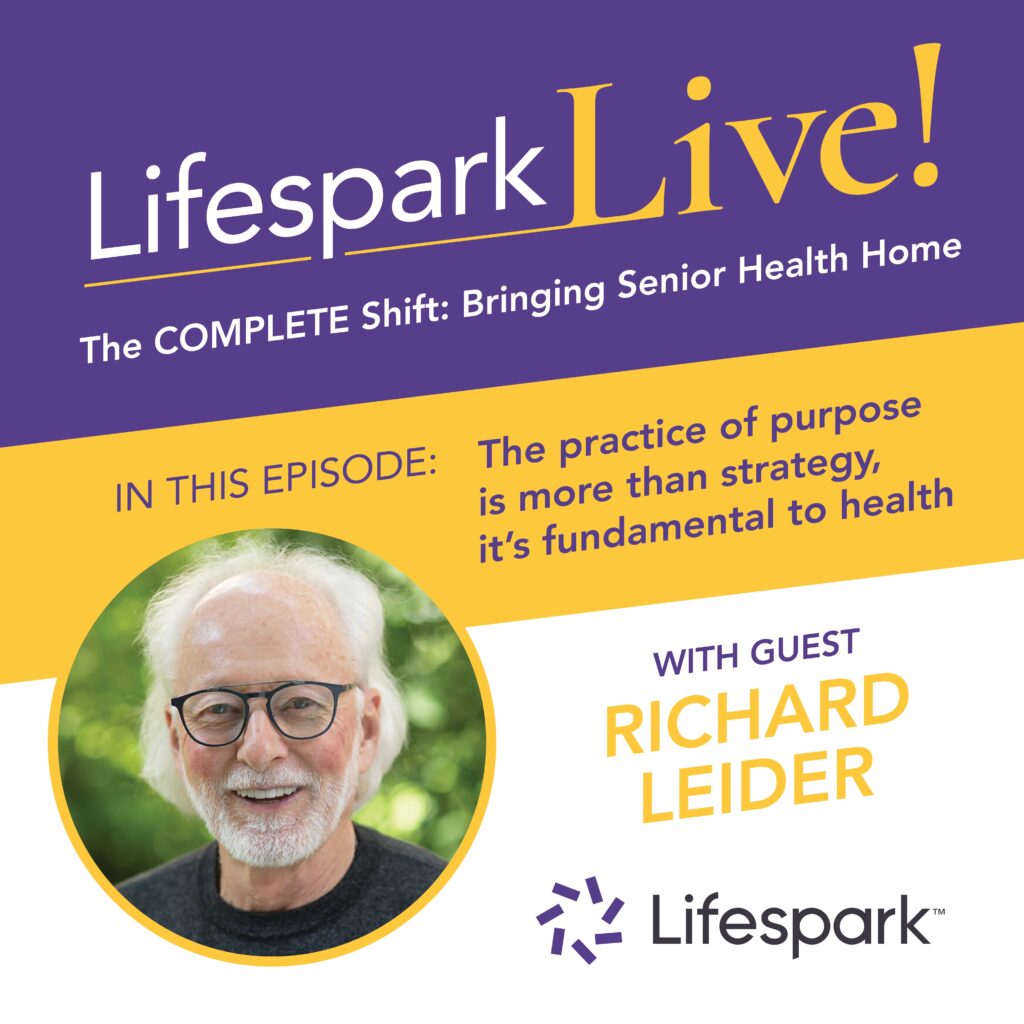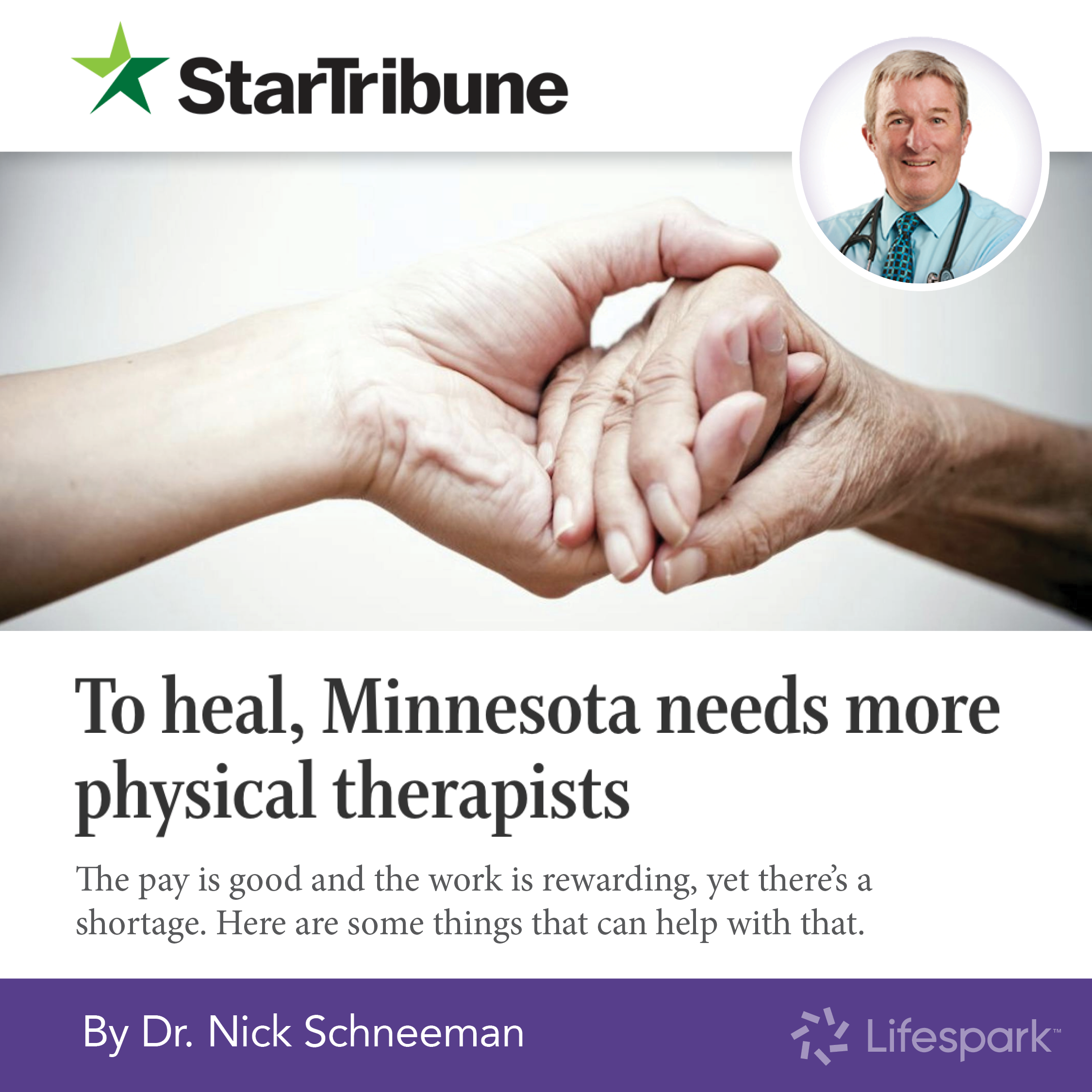
Where does purpose belong in your work? That question is meant both figuratively and literally as we explore the practice of purpose and the role it plays in reducing chronic disease and mortality as we age but also in how we serve our clients as health care professionals.
Listen to The COMPLETE Shift: ‘Conversation with Richard Leider: The practice of purpose is more than strategy, it’s fundamental to health of all’
There is a growing amount of evidence that proves purpose deserves a place in health care —keep that in mind as you build new innovations, care models, and strategies, especially for the senior population. For those with Alzheimer’s disease or other dementias for example, ‘living a life with a sense of purpose was associated with a 19% reduced rate of clinically significant cognitive impairment,’ and ‘people who don’t have a strong life purpose are more likely to die than those who do, specifically from cardiovascular diseases.’ When it comes to boomers, as discussed in our first podcast with Steve Gillon, author of Boomer Nation, they are choosing to live purposely for many of these reasons.
But the purpose conversation is just as much for those who serve as it is for those we serve. A study from the Mayo Clinic found that physicians who spend 20% of their time doing ‘work they find most meaningful are at dramatically lower risk for burnout.’ As staffing shortages rise nationally, risking our ability to care for people and increasing burnout, investing in purpose may just play a role in shifting the Great Resignation to the Great Reimagination.
In this episode of The COMPLET Shift, Lifespark’s podcast, we explore this topic in detail with Richard Leider, an expert on all things purpose. In our podcast, Joel Theisen, Lifespark CEO, asks Richard: is purpose really fundamental to health, happiness, and longevity? And can not having it drive health costs upward? Richard points out the conversation on purpose isn’t all rainbows and unicorns, “Purpose is critical and to me, a cornerstone of health.”
How do we create new models that incorporates purpose to drive better health outcomes, lower cost, and support health care professionals? Richard explains that it’s not enough to have a sense of purpose, we must put purpose into practice to get the outcomes we want. More than just asking the questions, physicians and providers can teach their patients how to do that and in return, find meaning in their vocation.
So, how do we put that into practice?
- Richard suggests two of his exercises ‘Grow and Give’ and the ’2-minute practice’ that you can put into action right now for yourself and your clients. Listen in for more detail.
- Recognize you don’t have to fix everything, sometimes, you just have to listen.
- Enlist the support of a purpose partner whether that’s a colleague, family, or friend for yourself and your patients. (At Lifespark, we call them Life Managers, and they are available to seniors at no additional cost with Lifespark COMPLETE™.)
- Partner with others who have purpose intentionally built into their model.
For the skeptics who think purpose is just a nice to have, Richard challenges you to look at the science. Purpose is just as effective as the prescriptions we write – it just takes a little more work. The good news, there are experts who can help put purpose into practice with you.
Listen in now to our podcast. And don’t forget to subscribe to our podcast so you get our podcast fresh off the airwaves. Up next, a conversation with Anne Tumlinson you won’t want to miss.
We want to know, how are you incorporating purpose into practice?





